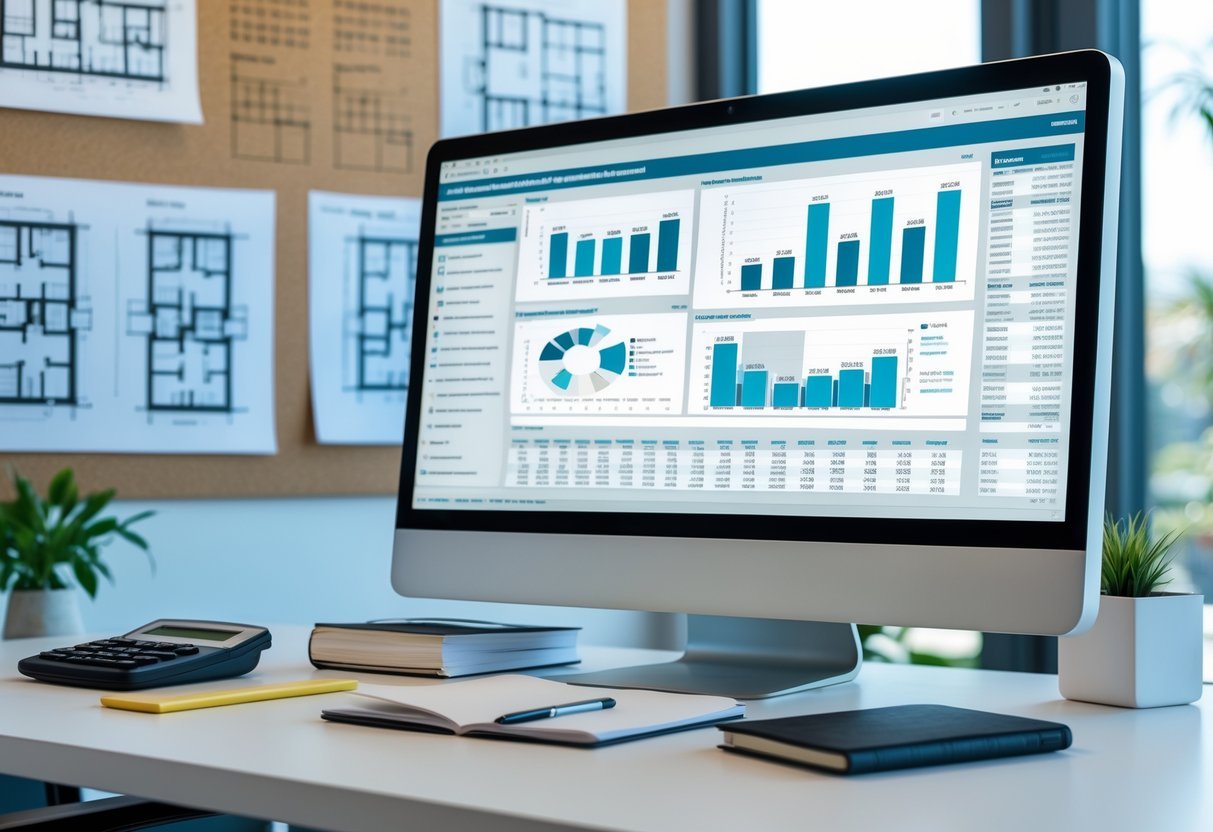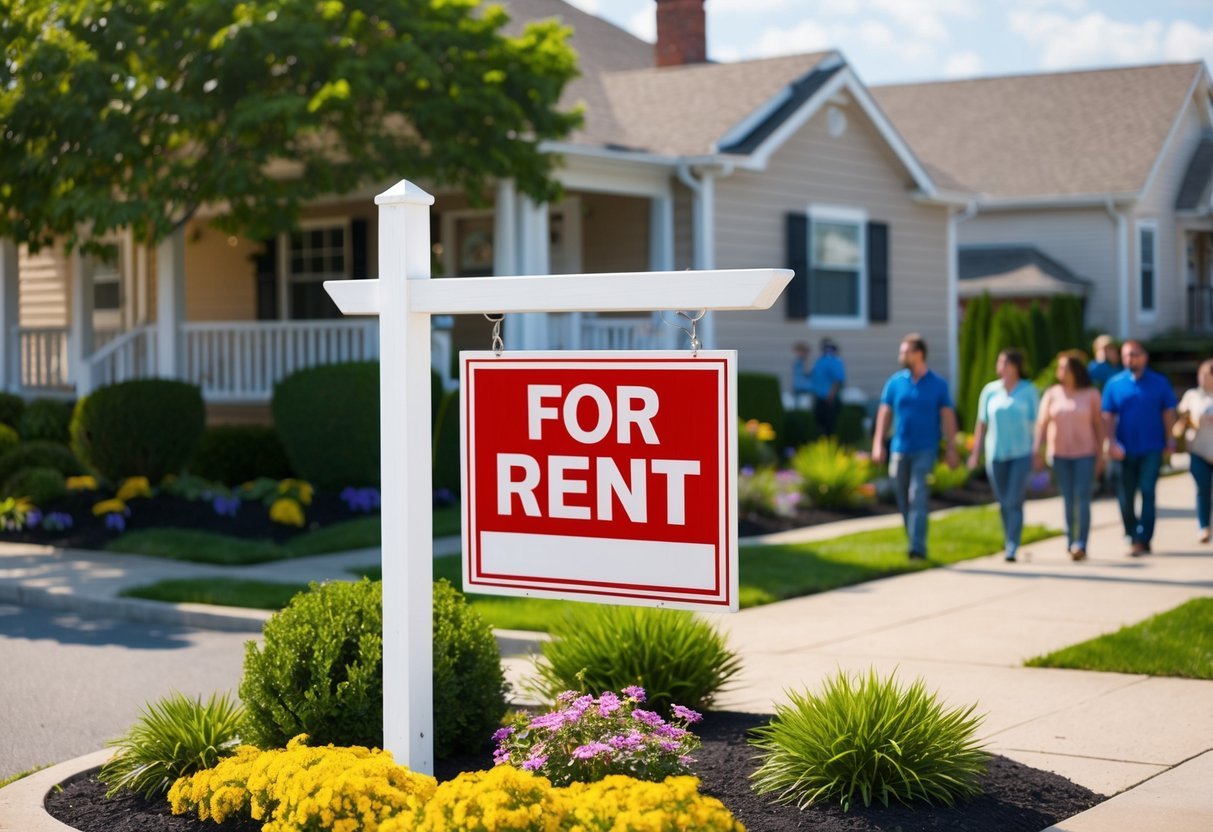Calculating ROI for a rental property isn’t just about adding up rent and subtracting expenses. To get a true picture of your rental property’s investment performance, you need to look beyond simple cash flow and consider appreciation, tax advantages, and the role of leverage. These factors can significantly impact your returns and help you make more informed decisions about your real estate investments.
Understanding advanced ROI calculation methods lets you evaluate properties with a sharper eye. This blog post will walk you through the crucial details, show you how to use sophisticated formulas, and uncover important strategies for maximizing returns on rental property investments.
Key Takeaways
- Advanced ROI looks at appreciation, taxes, and leverage for a full investment analysis.
- Deeper calculations let you better compare and select rental properties.
- Smart strategies can help you optimize your real estate ROI over time.
Fundamentals of Advanced ROI Calculation for Rental Property
Advanced ROI calculation for rental property requires a deeper understanding of multiple metrics, variables, and formulas. When evaluating investment opportunities, you need to account for not just the basics but more sophisticated strategies and factors to get accurate profitability estimates.
Understanding ROI Metrics
ROI, or return on investment, is central to any real estate investing strategy. The most basic ROI formula is:
ROI = (Net Profit / Cost of Investment) x 100
Net profit includes your total gains from the property, minus all expenses. For rental properties, annualized ROI and metrics like cash-on-cash return and capitalization rate (cap rate) offer additional perspective into performance.
You also need to understand rate of return over time, internal rate of return (IRR), and the time value of money. These metrics help you evaluate how long-term appreciation, leverage, and tax benefits affect your total returns.
Key Variables in ROI Analysis
To accurately calculate ROI, it is essential to include all costs and income streams. Key variables include:
- Purchase price and closing costs
- Initial investment amount
- Property taxes, insurance, and maintenance costs
- Property management fees and ongoing expenses
- Monthly mortgage payments and interest rate
- Total rental income and vacancy rates
You must also factor in variables like appreciation rate, opportunity cost, and potential tax advantages. An investment calculator or a dedicated rental property calculator helps organize these details for more precise results.
Advanced ROI Formulas and Methods
Beyond the basic roi formula, advanced calculations look at more detailed models. Cash-on-cash return focuses on annual pre-tax cash flow relative to your actual cash invested, providing a clear look at immediate liquidity.
The capitalization rate (cap rate) formula is:
Cap Rate = (Net Operating Income / Purchase Price) x 100
For long-term analysis, use internal rate of return (IRR). IRR factors in the timing of cash flows, appreciation, and leverage over years, showing a more comprehensive rate of return. Incorporating these advanced methods allows you to assess not just profit, but how efficiently capital is put to work in each investment.
Strategies and Considerations for Maximizing Rental Property ROI
Maximizing your rental property ROI requires coordination between increasing income, minimizing risks, and making data-driven choices. Success depends on understanding market trends, managing finances efficiently, and evaluating long-term growth opportunities with precision.
Optimizing Rental Income and Cash Flow
Boosting your rental income starts with setting competitive rental rates based on thorough market research and analysis of similar local properties. Accurate pricing can reduce vacancy rates while maintaining steady monthly rental income.
Consider ways to add value to your property, such as upgrades, improved amenities, or allowing pets where appropriate. Small improvements can often justify higher rents or attract and retain reliable tenants.
Other factors, like timely rent collection, effective property management, and regular maintenance, support healthy annual cash flow and help maintain or increase the current market value. Monitoring your rent-to-value ratio, cash-on-cash return, and annual cash flow figures allows you to identify areas for improvement and make adjustments quickly. Detailed strategies for optimizing returns are outlined in this step-by-step guide for maximizing rental income.
Mitigating Risk and Managing Costs
Managing operating expenses and preparing for potential risks are essential parts of ROI optimization. You can minimize unexpected costs by conducting regular property inspections, keeping insurance up to date, and budgeting for repairs or property emergencies.
Keep your vacancy rate low through screening tenants and responding swiftly to maintenance issues. A high vacancy rate can drastically impact your overall returns and reduce the time value of your financial investment.
Monitor interest rates and loan terms, particularly if your property is financed with a mortgage. Refinancing at a lower rate or adjusting loan terms may lower your monthly payments, increasing positive cash flow and reducing risk exposure. Consider setting aside a reserve fund as a buffer against unexpected expenses.
Making Informed Investment Decisions
Informed decisions start with recognizing that rental property ROI is more than just net rental income. When doing advanced ROI analysis, include long-term factors like potential property appreciation, equity growth, expected holding period, and available tax benefits.
Compare potential returns against alternative investment vehicles such as stocks or bonds, factoring in risk tolerance and investment length. Use data from comparable property sales, current market value trends, and local economic indicators to evaluate the projected ROI and identify a good ROI threshold for your situation.
Regularly revisiting your investment’s projected performance ensures you are adjusting for market changes and interest rates, and keeping your strategy aligned with your long-term goals. This proactive approach supports better, more resilient financial outcomes.
Frequently Asked Questions
Evaluating ROI for rental properties often means accounting for complex variables like mortgage interest, market trends, tax impacts, and leverage ratio. Advanced methods go beyond simple percentages to help you assess risk, return, and long-term growth.
How can I factor in mortgage payments when calculating ROI on a rental property?
To account for mortgage payments, include both the principal and interest components in your expense calculation. Subtract your annual mortgage payments from your total rental income, along with other property-related expenses, to compute true net operating income. Incorporating loan amortization helps you reflect cash-on-cash return and the impact of leverage in your ROI analysis.
What are the key variables to consider for a precise ROI calculation on a rental property?
Key variables include purchase price, down payment, loan terms, property taxes, insurance, maintenance, management fees, rental income, and vacancy rates. Advanced calculations should also account for appreciation, depreciation, and tax benefits. Considering these factors gives you a more accurate picture of long-term profitability.
What constitutes a strong ROI for a rental investment in today’s real estate market?
Generally, a strong ROI for a rental property ranges from 8% to 15%, but this can vary by location, property type, and market conditions. Higher returns may reflect higher risk, while lower returns might indicate a more stable investment. Assessing ROI should always be done in context with your financial goals and local market trends.
How do the 50% and 2% rules impact the ROI calculation for rental properties?
The 50% rule suggests that, on average, half of your rental income will go towards operating expenses, excluding mortgage payments. The 2% rule states that monthly rent should equal 2% of the purchase price for strong cash flow. Both rules serve as quick filters, but they are not substitutes for detailed analysis and can oversimplify ROI projections. Review practical guidelines on using these rules at DoorLoop.
Can you provide a step-by-step example of an advanced ROI calculation for a rental property?
First, determine your net operating income by subtracting all expenses (including vacancy, maintenance, and management fees) from gross rental income. Then factor in mortgage payments to calculate your annual cash flow. Add estimated property appreciation and tax savings. Divide this sum by your total cash invested to find your advanced ROI, accounting for equity buildup and tax benefits.
What Excel formulas should I use to streamline the ROI calculation process for my rental property investments?
In Excel, use SUM for total expenses, and simple subtraction for net income. For ROI, the formula = (Net Profit/Total Investment) *100 calculates your percentage return. To add appreciation and tax savings, include line items using SUM and reference them in the final ROI formula. Explore more details in guides like PropStream’s ROI calculation guide.




